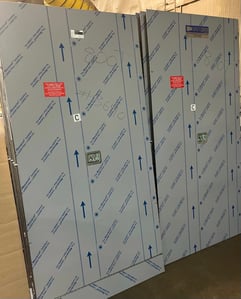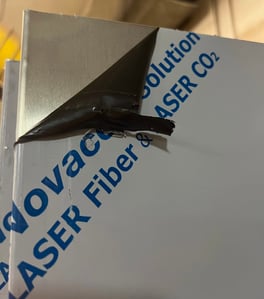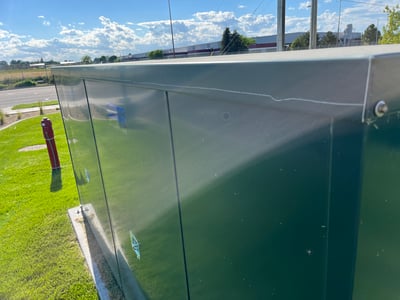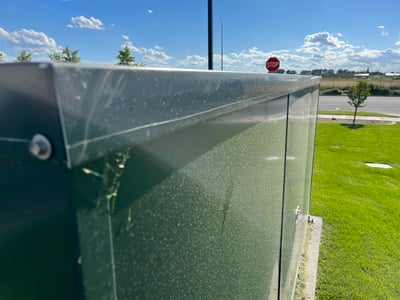 Did you know that every aluminum enclosure and panel from Safe-T-Cover comes with a protective PVC coating attached? This peel-off coating is applied at the factory and protects the aluminum from inadvertent scratches and dents that can occur during our forming processes and while performing on-site installations. This coating is self-adhesive and is designed to be completely removed after the enclosure has been installed.
Did you know that every aluminum enclosure and panel from Safe-T-Cover comes with a protective PVC coating attached? This peel-off coating is applied at the factory and protects the aluminum from inadvertent scratches and dents that can occur during our forming processes and while performing on-site installations. This coating is self-adhesive and is designed to be completely removed after the enclosure has been installed.
PVC coating is used in many industries, not just the enclosure business. I’m sure you’ve seen boats completely wrapped in white plastic in delivery. This ‘boat wrap’ is very similar to the PVC coating that comes on all of our enclosures. Other industries using this protective technology include automotive, architectural, advertising, and window and door manufacturers.
While PVC coating is durable and keeps our enclosures from unwanted scratches and damage, it is meant to be temporary. All coating should be completely removed after the enclosure is installed. If the coating is left on, in a few months, the environment and elements can permanently adhere the coating to the aluminum. Sunlight is especially damaging as it will literally melt the PVC onto the enclosure, making it virtually impossible to remove. Follow the instructions on our warning labels and completely remove the protective coating once the installation of the Safe-T-Cover is complete.
Another feature of the self-adhesive protective PVC coating is that it is easily removed. Removal is so easy, that no tools are required to remove the protective coating! Simply find a corner or edge and start peeling away. It’s actually kind of fun, like popping the air pockets out of bubble wrap.

As you can see from the attached pictures, if you cut the coating with a razor knife, the beautiful aluminum surface underneath will be permanently damaged.


Safe-T-Cover enclosures are designed to protect your backflows, control valves, meters and pump systems for decades to come. But before they make it out of our production facility and before you completely install them on your job site, we like to keep the aluminum surfaces protected with a sheet of PVC coating. Rest easy knowing the coating will keep your aluminum scratch-free before installation, but once your enclosure is in place, peel off the coating and throw it away; it has done its job.




